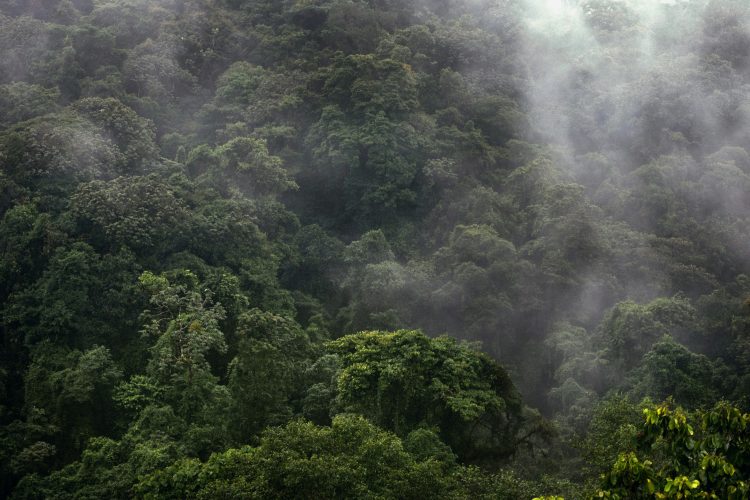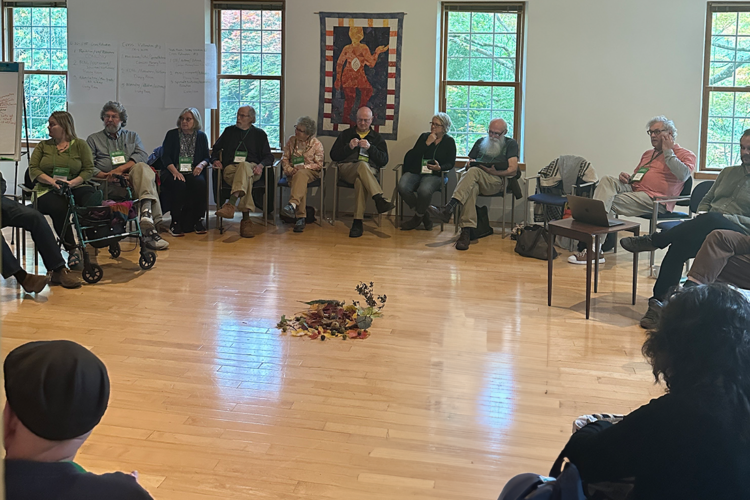You Can’t Have Your Kay(a)k and (H)eat it, Too!

Alaska Friends have a deep connection to their land, as I learned on a recent visit when I facilitated a daylong workshop on earthcare, climate change, and witness in the world. The title of this article was the theme for their annual gathering. For three days we explored how we can transform our lives and our world to create a livable planet in the years to come. With the extreme weather they experience regularly, the disproportionate impact of climate change in the Arctic and subarctic, and an economy that is heavily dependent on the oil and gas industry, Alaskan Friends are already facing the impacts of global climate disruption and are ready to discern what we can and ought to do about it.
More than many of us, most Alaskans understand that we are a part of the natural world. Our way of life must adapt to the vicissitudes of nature, not the other way around. Most non-native Alaskans moved to Alaska or stayed on because they value the natural resources and creative ways that people have traditionally lived in this beautiful and challenging environment. Please hold them in the light over the next two months as they struggle to find way forward on their path. By choosing to take action, Alaska presents both an opportunity for Friends to address climate disruption as it directly impacts our way of life, and an expression of Alaskans’ deep love for the natural world.
I learned so much about Alaska, Alaskans, and the Friends of the Alaska Friends Conference. I hope they gained as much from my workshop as I have gained in insight and inspiration during my time with them.
Here are some interesting features about Alaska that I learned on this visit:
- Climate change is already changing the way people live in Alaska—from the different patterns and greater numbers of forest fires, to changing populations of plants and animals on which native subsistence life depend.
- The trees are short in central Alaska due to harsh winters, poor soil, and permafrost.
- 80 percent of the state is covered with permafrost; on average, it is found 4 feet from the soil surface.
- Alaska recycles. Apparently, every retired school bus has found its way to Denali National Park and Preserve. These buses are used to ferry tourists through the park, so the bears, moose, Dall sheep, and caribou can roam freely.
- Alaskans have a strong sense of the commons expressed in a shared use of natural resources. Each resident is allowed to take 10-25 salmon per year (actual limits vary depending on the species and the watershed) and many, many people were out fishing while I was there, which coincided with the Coho salmon (silvers) run. As with the salmon, folks were out picking wild berries, which were just coming into season, and storing them for the year. Oil (petroleum) is seen as a community resource, and part of the royalties paid to the state are used to create the public Alaska Permanent Fund, meant to be shared by all. How best to share this fund is a continuing source of controversy.
- People understand the annual cycle of nature and work within this cycle, engaging in fishing, hunting, summer gardening, and berry picking. They also love winter sports, no matter the temperature.
- Alaska is large, equal to 20 percent of the land mass of the lower 48 states. If the population density of Alaska was applied to the footprint of New York City, there would be 380 people in all five boroughs.
- 350 bears live in Denali National Park and Preserve; 350 bears live in the greater
Anchorage area. - Mt. Denali remained elusive—no sightings for me. Finding the mountain was not what this trip was about; rather, it was about the journey along the road. At Denali, I rode in an old school bus “cage” for hours, looking at the bears, moose, caribou, and Dall sheep that roamed freely in their natural habitat. They came to us on their own terms: as long as we remained quiet and stayed in the bus, we were able to co-exist. The park is designed to provide access to people and provide space for the animals. My wildlife count after two days: 2 trumpeter swans (on the way in), 4 moose, 14 bears, at least 100 caribou, 8 ptarmigans, 20 Dall sheep, and 1 golden eagle. Later in the trip, in southeastern coastal Alaska, we also saw several pods of orcas and a few bald eagles.
- Indigenous people make up 15 percent of the population and have never lived on reservations. Western contact created great hardships, but, following the Alaska Native Lands Settlement Act of 1971, native Alaskans formed corporations, with many families still practicing a subsistence lifestyle, including hunting, fishing, and whaling.
Fifteen years ago, Alaskan Friends sponsored the Compassionate Listening Project, focused on the controversial issue of subsistence. On one side were rural Alaskans, many of whom were Native, who relied on subsistence fishing and hunting not just for food but for their culture and way of life. On the other side were urban and small-town Alaskans who wanted equal access to fish and game, and who themselves may have had rich fishing and hunting traditions. The Project led to greater understanding and respect among the participants. During the 2014 Alaska Friends Conference, we reviewed how this project was conducted and considered whether a similar project could be launched now with a focus on the impacts of climate change and living sustainably. Friends are working with the concept and will re-gather at a fall called-session to decide on their next steps.
One unique aspect to life in Alaska is that each resident receives a dividend from the production of oil and gas in the state. Each year, the State of Alaska contributes a percentage of its oil royalties to the Alaska Permanent Fund, now valued at $51.6 billion. Earnings from the fund are meant to help fund the state government as oil and gas production declines (some estimates say that North Slope oil and gas production will be depleted within 30 years). In addition, each resident receives a yearly dividend from the fund (a Permanent Fund Dividend, or PFD). Last year the dividend was around $900 per person, although it is estimated that in 2014, the amount may double. I challenged Alaska Friends who are able to consider donating their dividend to support alternative energy or other climate change activism. One Friend offered her dividend to support those in need and within closer range to attend the People’s Climate March in New York City, and QEW distributed these funds accordingly.
There is a statewide controversy over how much to “tax” oil and gas production. A measure to increase taxation was defeated in mid-August, with the “No” advocates (supporting a lower rate of royalties) outspending the “Yes” advocates by more than 20 to 1.
We will keep you posted on the next steps for Alaska Friends Conference.

